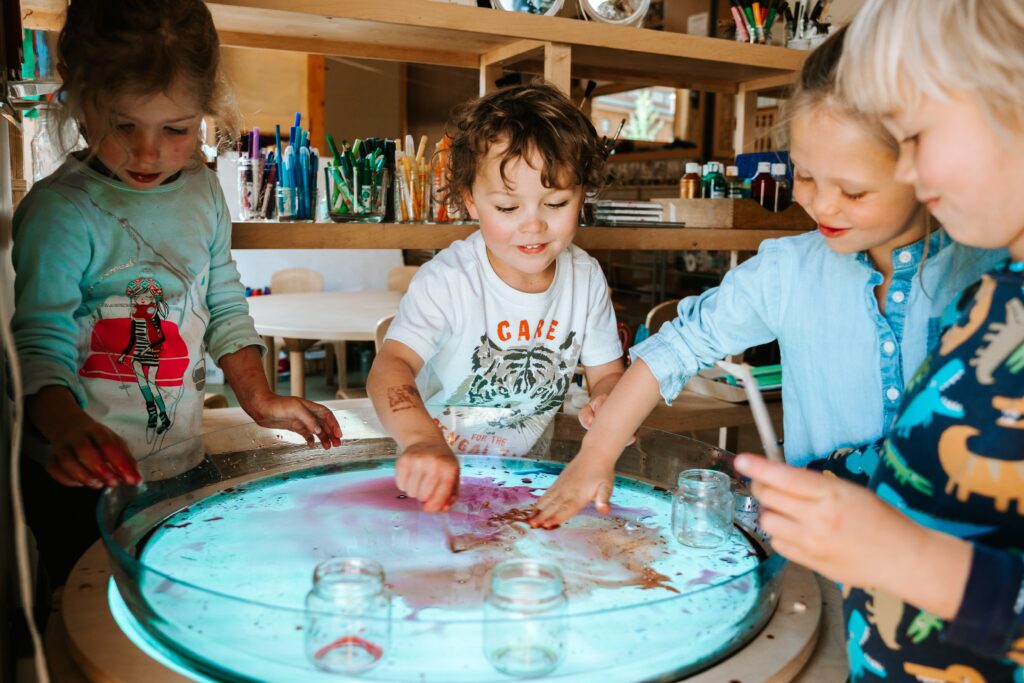Ask a group of people to define the word “art” and you’re bound to receive a multitude of answers. For some it may render definitions alluding to finished products we’d see in a museum, sculptures made of clay or rock or even the paper mache masks we made in elementary school. For others, “art” is a spontaneous, open-ended and messy exploration free from direction or involvement of others. It’s a tricky word, but one that is open for interpretation, much like the processes and products we prescribe to it.
In the classroom, the subject of art has earned somewhat of a controversial reputation. It has been celebrated for its power to encourage joyful, active learning and help students make and express personal connections to content, and yet, it has also been condemned as a luxury and non-critical to the excellence of students and schools in their standardized testing achievements. In some classrooms, however, art is an essential and critical component of the curriculum; it is a “lively process of engagement…that is sensual and reflective, creative and deliberate, and that deepens and extends children’s learning” (Pelo, 2007). This is “art” in the Reggio Emilia inspired classroom.
Art Inside the Reggio Emilia Classroom
“Through encounters with a wide range of media and materials, children explore the sensuousness and beauty of color, texture, movement, lines and space. They learn to look carefully and discern nuances, to move with thoughtful intention, and to follow their intuition. As children become more comfortable and skillful with these media, they are able to use them to communicate their understanding, emotions, and questions. Their fluency in a range of art ‘languages’ in turn, opens new possibilities for collaboration and dialogue, for taking new perspectives and for deepening their relationships with each other.” – Ann Pelo, The Language of Art
In the early childhood classrooms here at Mountain Academy of Teton Science Schools, these understandings of the power of art guide our daily practices. Walk into any and you’re bound to step into a space that inspires curiosity, wonder and awe; a space that touches the senses in every which way and tempts you to feel, explore and express your ideas through mediums like music, painting, collage, dance or as founder of the Reggio Emilia philosophy, Loris Malaguguzzi, called them, the hundred languages.
Observe what happens throughout the day in one of these spaces and you’re sure to witness students leading the charge in their own open-ended creations. Rather than leading children through product-oriented art activities, teachers offer students mediums like colored pencils, tape and glue, watercolor paints and brush, clay or collage artifacts, allowing them to experience the process of creating art.
Contrary to how it might seem, the experience is not free-for-all.
There is an art and science to introducing a new “language of material”. Like Pelo explains, “we [must] introduce children to an art medium, as we would introduce two of our dear friends to each other, launching a relationship that will be built over time with many encounters.”
So how does one do it?
Four steps to introduce a new language of material

-
-
- Invite children to explore the new art medium with the senses: What does the new material feel like on your hands? How does it move on different types of paper? What sound does it make when you spread it with a paintbrush? Your hands? A popsicle stick?
-
-
-
- Invite children to explore ways in which they can use the art medium for representation: How might you use this new material to make a portrait of your cat? How might you use it to tell the story of moving into your new house?
-
-
-
- Invite children to compare the usefulness of the material: To color your drawing, do you think it watercolor paint or this new material, colored pencils, would be the best choice?
-
-
-
- Invite children to use art media for communication and for critical thinking: Let’s draw the city that you built with the wooden blocks so that you can remember your work when you come back to school tomorrow. Can you sketch your idea of how the pulley in the treehouse would work, so we can all see what you’re thinking?
-
In building these relationships with different art media over time, children have the ability to gain fluency in the language of art, turning to and using materials to express their ideas, honor memories and record their experiences. “Art” becomes a lively, joyful and playful process in communicating their everyday emotions.
Take our Language of Materials Workshop on February 26
Learn more about Preschool – 12 project-based learning at Mountain Academy


